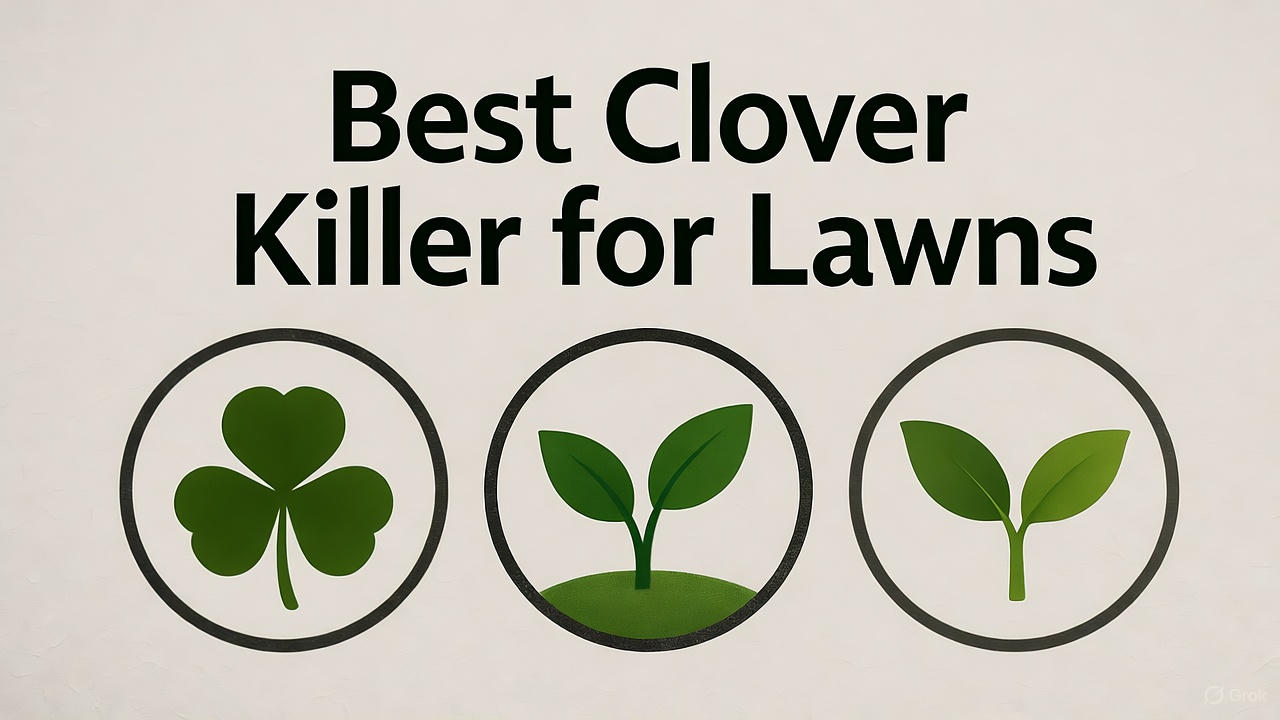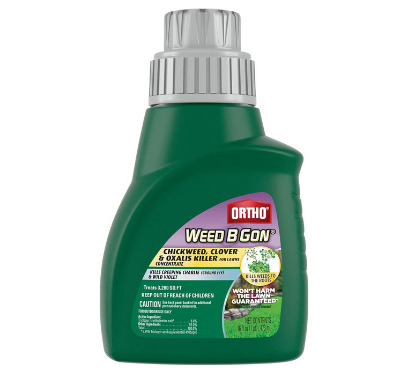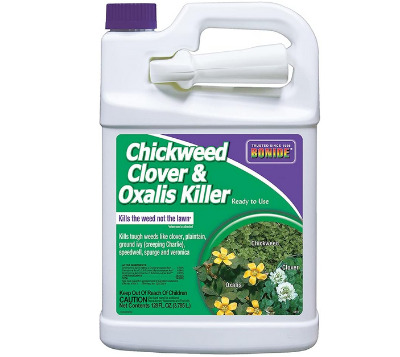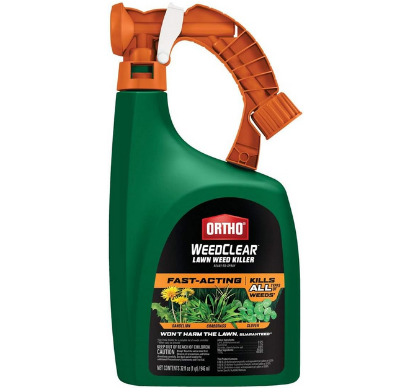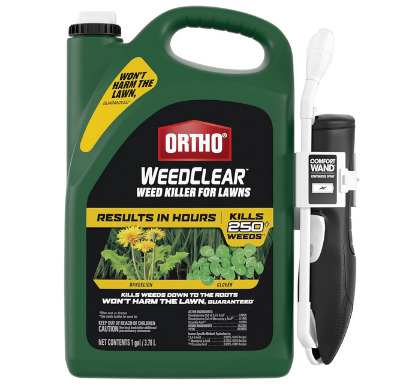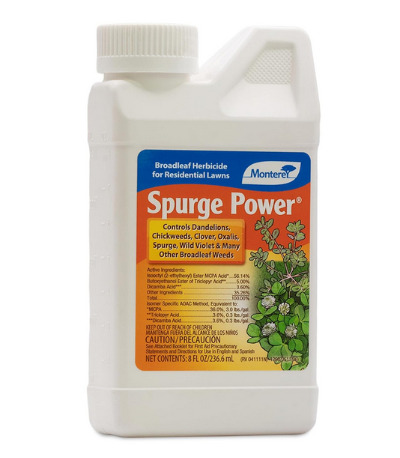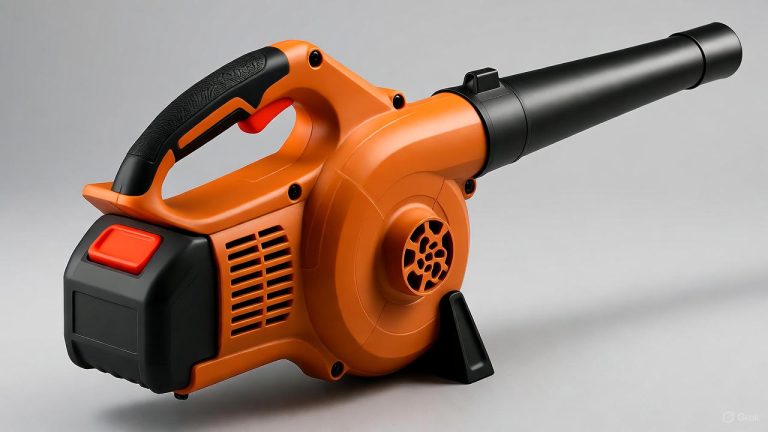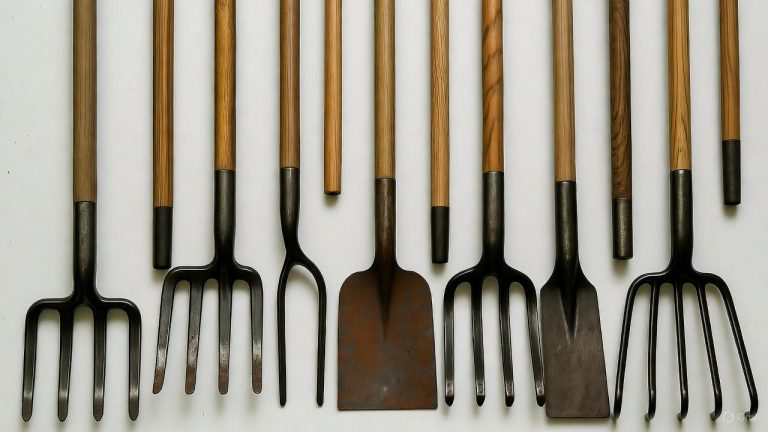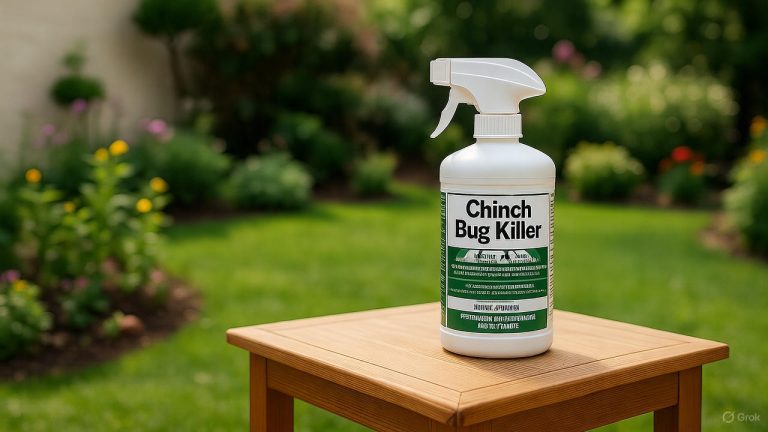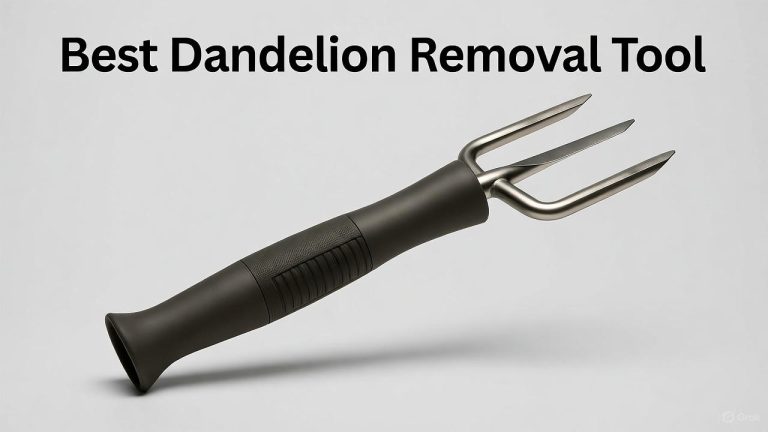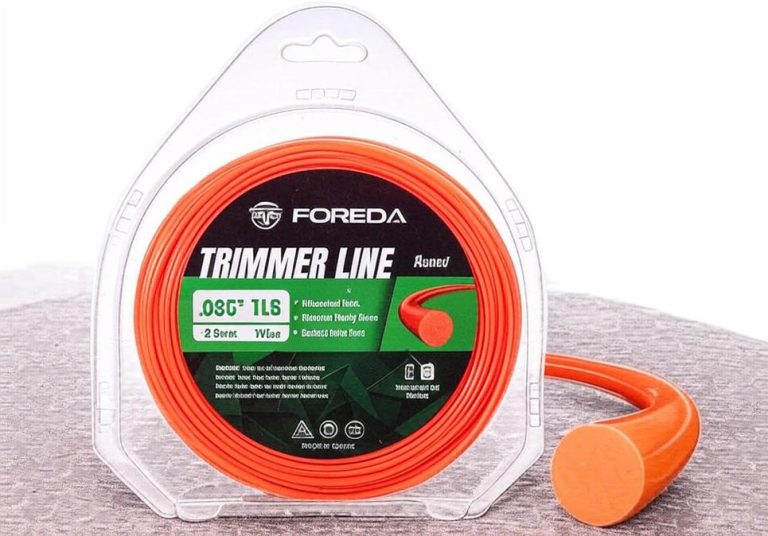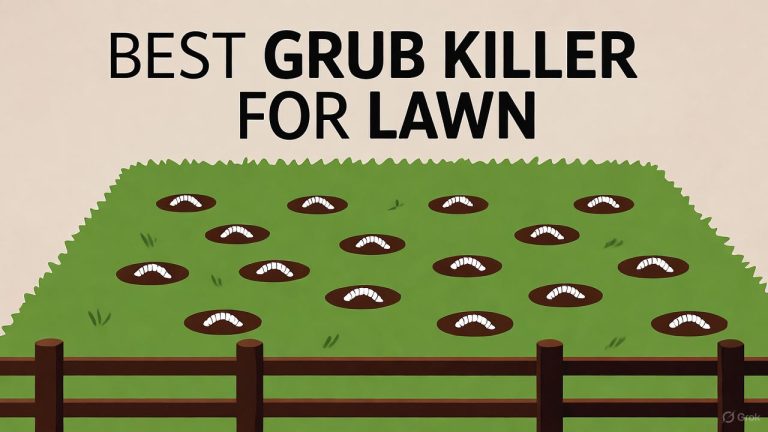5 Best Clover Killer for Lawns In 2025
Clover patches scattered across your lawn can quickly transform a pristine green carpet into a spotted mess. This persistent weed thrives in various conditions and spreads rapidly if left unchecked. Homeowners face a constant battle against these invasive plants that compete with grass for nutrients, water, and sunlight.
Finding the right clover killer makes all the difference between a frustrating ongoing struggle and effective weed control. The market offers numerous herbicide solutions, each with unique formulations, application methods, and effectiveness levels. This comprehensive guide examines five top-performing clover killers that deliver real results without damaging your turf.
Understanding Clover Invasion in Your Lawn
White clover appears as the most common variety invading residential lawns. This low-growing perennial spreads through above-ground stems called stolons, creating dense patches that crowd out grass. The distinctive three-leaf pattern and white flowers make clover easy to identify, but its removal requires more than simple recognition.
Clover thrives in nitrogen-poor soil conditions where grass struggles to compete. Lawns with compacted soil, inadequate fertilization, or improper mowing height become prime targets for clover establishment. The weed’s deep root system and hardy nature allow it to survive drought conditions that stress grass, giving it a competitive advantage during dry spells.
Many homeowners notice clover spreading most aggressively during spring and fall when temperatures remain moderate and moisture levels stay consistent. The plant produces seeds prolifically, ensuring new generations continue the invasion cycle. Once established, clover forms thick mats that prevent grass seed germination and weaken existing turf through resource competition.
Key Factors in Clover Killer Selection
Effective clover control requires understanding what makes certain herbicides work better than others. Several critical factors influence product performance and determine which solution best fits your specific lawn care needs.
Active Ingredient Composition
The chemical formula drives herbicide effectiveness. Selective broadleaf herbicides target dicot plants like clover while leaving monocot grasses unharmed. Triclopyr, 2,4-D, and MCPP represent common active ingredients in clover killers. These compounds disrupt hormonal processes in broadleaf weeds, causing uncontrolled growth that eventually kills the plant.
Products combining multiple active ingredients typically provide broader spectrum control and attack weeds through different mechanisms. This multi-faceted approach reduces the likelihood of herbicide resistance and increases overall effectiveness against stubborn clover populations.
Application Method Convenience
Ready-to-spray formulas connect directly to garden hoses, making large area treatment simple and quick. These products require minimal preparation and eliminate mixing concerns. Concentrate formulas offer cost advantages for treating extensive lawn areas but demand accurate dilution ratios for optimal performance.
Ready-to-use spray bottles provide precision for spot treatments and smaller lawns. The convenience factor suits homeowners who prefer grab-and-go solutions without equipment hassles. Each application method serves different user preferences and property sizes.
Coverage Area Capacity
Treatment area specifications help determine product value and quantity requirements. Some concentrates treat several thousand square feet per container, while ready-to-use options cover smaller zones. Calculate your lawn size before purchasing to ensure adequate supply for complete coverage.
Larger properties benefit from concentrated formulas that maximize coverage per dollar spent. Smaller yards and spot treatment scenarios work well with ready-to-use options that prevent waste from unused mixed herbicide.
Grass Safety Profile
Quality clover killers kill broadleaf weeds without harming desirable turfgrass. Products labeled as lawn-safe have undergone testing on common grass types including Kentucky bluegrass, perennial ryegrass, tall fescue, and Bermuda grass. Always verify compatibility with your specific grass variety before application.
Some formulations show better safety margins on certain grass types. Cool-season grasses like fescue and bluegrass typically tolerate broadleaf herbicides well, while warm-season varieties may show sensitivity to specific active ingredients during certain growth stages.
Speed of Visible Results
Some herbicides produce visible wilting within hours, while others require several days for symptoms to appear. Fast-acting formulas satisfy impatient homeowners wanting immediate confirmation of product effectiveness. Slower-acting compounds may provide more thorough systemic control by moving through the entire plant before symptoms manifest.
Temperature, humidity, and plant growth stage all influence how quickly herbicides work. Active growing conditions accelerate herbicide uptake and symptom development, while dormant or stressed weeds respond more slowly to treatment.
Top 5 Clover Killers for Lawns Reviewed
1. Ortho Weed B-gon Chickweed, Clover & Oxalis Killer for Lawns Concentrate
This concentrated formula targets the three most problematic lawn weeds with surgical precision. The 16-ounce bottle treats up to 3,200 square feet, making it an economical choice for medium to large properties. The concentrate format allows custom mixing ratios for different infestation severities.
Active Ingredients and Mechanism
The formula combines multiple active ingredients that work synergistically to eliminate clover at the root level. These compounds absorb through foliage and translocate throughout the plant, reaching underground root systems that simple contact herbicides miss. This systemic action prevents regrowth from surviving root fragments.
The balanced formulation provides selective control, targeting broadleaf weeds while sparing grass. The herbicide disrupts auxin hormone pathways specific to dicot plants, causing abnormal cell division and growth that exhausts plant energy reserves. Treated clover shows curling, twisting foliage within days, followed by complete browning and death.
Application Process
Mix the concentrate with water according to label directions in a pump sprayer or hose-end applicator. The product requires thorough mixing to ensure even distribution of active ingredients. Apply during calm conditions to prevent drift onto desirable plants. Target visible clover patches and surrounding areas where spreading may occur.
Coverage remains uniform when applying at recommended walking speeds. Overlap spray patterns slightly to avoid missed strips where weeds can survive. The concentrate’s viscosity helps it cling to waxy clover leaves for maximum absorption.
Performance Results
Users report visible weed wilting within 24 to 48 hours under optimal conditions. Complete clover death typically occurs within one to two weeks of application. The product demonstrates excellent grass safety on common lawn types when used as directed. Heavy infestations may require a second application after 30 days for complete eradication.
The formula remains effective across a wide temperature range, though best results occur when treating actively growing weeds. Spring and fall applications coincide with peak clover growth, maximizing herbicide uptake and effectiveness. The concentrated format provides treatment flexibility and cost efficiency for multiple applications throughout the growing season.
Pros:
- Economical coverage per container
- Concentrated formula allows custom mixing
- Treats 3,200 square feet efficiently
- Effective against multiple tough weeds
- Systemic action kills roots
Cons:
- Requires mixing equipment
- Must calculate dilution ratios
- Less convenient than ready-to-use options
2. Bonide Chickweed, Clover & Oxalis Killer Ready-to-Use Spray
The 128-ounce ready-to-use formulation eliminates mixing hassles while delivering professional-grade weed control. The large one-gallon container suits extensive treatment needs without requiring additional equipment or preparation. Simply attach the sprayer, pump the handle, and apply.
Formula Characteristics
This ready-to-use solution contains precisely blended active ingredients at optimal concentrations for immediate application. The formulation penetrates deep into weed root systems, ensuring complete kill without lawn damage. The chemistry specifically targets broadleaf weed biology while remaining inert to grass physiology.
The product incorporates surfactants that enhance leaf absorption and improve rainfastness. These additives help the herbicide stick to waxy clover foliage and resist wash-off during light precipitation. The balanced pH prevents leaf burn while maximizing active ingredient stability.
Ease of Use
The integrated pump sprayer eliminates external equipment needs. Users simply pump the handle several times to build pressure, then squeeze the trigger for continuous spray delivery. The adjustable nozzle switches between stream and fan patterns for different application scenarios. Stream settings target individual clover patches, while fan patterns cover larger infested areas efficiently.
The transparent container allows monitoring remaining product levels. The ergonomic handle reduces hand fatigue during extended applications. The large capacity minimizes refill frequency when treating substantial lawn areas.
**Effectiveness Against Clover
The ready-to-use concentration delivers consistent results without mixing errors. Treated clover exhibits herbicide symptoms within days, showing characteristic leaf cupping and discoloration. The systemic action moves through vascular tissues, reaching root crowns and rhizomes that enable regrowth.
Root system destruction prevents clover regeneration from underground plant parts. The complete kill extends to stolons spreading across the lawn surface, stopping lateral expansion. Visible weed death completes within two weeks under favorable conditions. Grass recovery in treated areas begins immediately as nutrient competition disappears.
Value Proposition
The 128-ounce volume provides substantial coverage despite being pre-diluted. The convenience factor appeals to homeowners who prioritize simplicity over maximum coverage per dollar. The ready-to-use format ensures proper herbicide concentration, eliminating guesswork and potential application errors from incorrect mixing.
Storage simplicity represents another advantage, as the product remains ready for immediate use whenever clover appears. No measuring, mixing, or equipment cleaning interrupts the treatment process. The pump sprayer design proves reliable for multiple seasons with basic maintenance.
Pros:
- No mixing required
- Large 128-ounce capacity
- Integrated pump sprayer included
- Adjustable spray patterns
- Foolproof concentration
- Controls roots effectively
Cons:
- Lower coverage per ounce than concentrates
- Bulkier storage requirements
- Higher cost per treated area
3. Ortho WeedClear Lawn Weed Killer Ready-to-Spray
This 32-ounce hose-end sprayer brings convenience and power together in a compact package. The ready-to-spray format connects directly to standard garden hoses, utilizing water pressure for effortless application across large lawn areas. The product targets crabgrass, dandelions, and clover simultaneously.
Hose-End Technology Benefits
The specialized sprayer head automatically mixes concentrate with water at optimal ratios as you spray. This metering system ensures consistent herbicide concentration throughout application. Water flow from the hose propels the spray mixture several feet, covering ground quickly without manual pumping.
The spray pattern provides even coverage across wide swaths of lawn. Users simply walk at a steady pace while pointing the nozzle at weed-infested areas. The continuous spray eliminates stop-and-go interruptions needed with pump sprayers. Treatment time drops significantly compared to manual application methods.
Multi-Weed Control Spectrum
The broad-spectrum formula attacks various lawn weeds beyond just clover. Crabgrass, dandelions, chickweed, and dozens of other invasive species succumb to this powerful herbicide blend. This versatility makes it ideal for lawns facing multiple weed challenges simultaneously.
The balanced active ingredient profile provides consistent results across different weed types. Some herbicides excel against specific weeds but show weakness against others. This formulation demonstrates reliable performance across the entire target weed spectrum, simplifying weed control programs.
**Application Coverage
The 32-ounce concentrate treats substantial lawn areas when diluted through the hose-end sprayer. The automatic mixing feature prevents the waste associated with preparing too much or too little mixed herbicide. Users treat only the area needed without leftover mixed product disposal concerns.
The spray-and-go method suits time-pressed homeowners who want effective results without elaborate preparation. Connect to the hose, turn on the water, and start spraying. The intuitive design requires no special training or expertise. Treatment completion happens in a fraction of the time manual methods require.
Grass Compatibility
The lawn-safe formula works with common turfgrass varieties found in residential lawns. Kentucky bluegrass, perennial ryegrass, fine fescue, and tall fescue all tolerate this herbicide well. The selective chemistry differentiates between grass and broadleaf plants at the cellular level, providing targeted weed control.
Visible grass injury remains minimal when applying according to label directions. The product incorporates safeners that protect grass from herbicide stress while maintaining full potency against target weeds. This careful formulation balance delivers effective weed kill without compromising lawn health or appearance.
Pros:
- Hose-end convenience
- Automatic mixing prevents errors
- Fast application speed
- Controls multiple weed types
- Compact 32-ounce size
- Wide spray pattern
Cons:
- Requires garden hose access
- Limited portability
- Smaller capacity than gallon sizes
4. Ortho WeedClear Weed Killer with Comfort Wand
The one-gallon battery-powered wand system represents the pinnacle of user-friendly weed control technology. The extended comfort wand eliminates bending and stooping during application. The product claims effectiveness against over 250 weed species, including stubborn clover varieties.
Comfort Wand Design Innovation
The extended wand reaches ground level while users maintain upright posture. This ergonomic design prevents back strain during lengthy treatment sessions. The lightweight construction reduces arm fatigue despite the one-gallon capacity. The balanced weight distribution keeps the unit comfortable during extended use.
The battery-powered pump delivers consistent spray pressure without manual pumping. A simple trigger control starts and stops spray flow instantly. The adjustable nozzle rotates between fine mist and coarse stream settings. Users select the appropriate pattern for different application scenarios, from blanket coverage to precision spot treatment.
**Broad-Spectrum Weed Control
The 250+ weed kill claim covers virtually every common lawn invader. Clover, dandelions, chickweed, ground ivy, spurge, and countless other species fall victim to this powerful formula. The comprehensive control eliminates the need for multiple specialized products targeting different weed types.
The active ingredient combination attacks weeds through multiple pathways, reducing resistance development. Some weeds develop tolerance to single-mode herbicides over time. The multi-faceted approach maintains effectiveness against both susceptible and potentially resistant weed populations.
Extended Coverage Capacity
The one-gallon volume handles large properties without frequent refilling. The extended operating time allows treating several thousand square feet in a single session. The battery life matches the container capacity, ensuring consistent spray pressure until the tank empties.
The translucent tank shows remaining product levels at a glance. Users gauge remaining coverage capacity without interrupting application flow. The wide mouth opening simplifies refilling when treating extensive areas requiring multiple tank loads.
User Experience Quality
The comfort wand transforms tedious weed spraying into a manageable task. The ergonomic advantages prove especially valuable for homeowners with mobility limitations or back problems. The extended reach accesses difficult areas under shrubs and around obstacles without awkward positioning.
The battery-powered operation eliminates the physical effort of manual pumping. Consistent spray pressure maintains uniform application quality throughout the treatment session. The reliable performance builds user confidence in achieving thorough, effective weed control.
Pros:
- Extended comfort wand design
- Battery-powered convenience
- One-gallon capacity
- Controls 250+ weed species
- Ergonomic operation
- Adjustable spray patterns
Cons:
- Higher initial cost
- Battery maintenance required
- Bulkier than smaller units
5. Monterey Spurge Power Selective Broadleaf Herbicide
This specialized 7-ounce concentrate delivers professional-grade performance in a compact package. The formula specifically targets tough broadleaf weeds including dandelions, chickweed, and clover. The selective chemistry protects grass while eliminating invasive plants.
Professional-Grade Formulation
Monterey Spurge Power incorporates active ingredients used by lawn care professionals for reliable results. The concentrated formula requires precise dilution but rewards users with exceptional effectiveness. The small bottle treats significant lawn areas when properly mixed, offering excellent value for money.
The chemistry employs systemic action that moves throughout the entire plant structure. Surface contact herbicides kill only visible foliage, allowing weeds to regenerate from roots. This product translocates through vascular tissues, reaching underground plant parts for complete elimination.
Targeted Broadleaf Control
The selective herbicide distinguishes between grass and broadleaf plants at the biochemical level. Grass cell structures lack the receptor sites where these herbicides bind, conferring natural immunity. Broadleaf weeds possess the molecular targets these compounds attack, resulting in selective control.
Clover proves particularly susceptible to this formulation. The low-growing habit and dense foliage make clover an easy target for thorough spray coverage. The herbicide penetrates through the waxy leaf cuticle, entering plant cells where it disrupts normal growth processes. Treated clover shows distortion and discoloration within days.
Mixing and Application Guidelines
The 7-ounce concentrate requires mixing with water in a separate sprayer. Following label directions ensures optimal herbicide concentration for maximum effectiveness. Precise measurement prevents under-dosing that allows weed survival and over-dosing that wastes product or risks grass injury.
A quality pump sprayer or backpack sprayer provides best results. Mix thoroughly before and occasionally during application to maintain uniform herbicide concentration. Apply to actively growing weeds when conditions favor rapid growth. Adequate spray coverage ensures all clover foliage receives herbicide contact.
Performance Expectations
Users report excellent clover control with proper application technique. The systemic action produces visible symptoms within several days as auxin-type herbicides disrupt cell division. Clover plants exhibit characteristic twisting, cupping leaves followed by yellowing and browning. Complete plant death occurs within two weeks under favorable conditions.
The selective formula demonstrates excellent grass safety margins. Common turfgrass species show minimal stress when treated according to directions. Temporary grass discoloration occasionally occurs but resolves quickly as grass resumes normal growth. The benefits of weed elimination far outweigh minor transient effects.
Pros:
- Professional-grade effectiveness
- Compact 7-ounce size
- Concentrated formula
- Excellent value per treatment
- Strong selective action
- Systemic root control
Cons:
- Requires mixing equipment
- Smaller volume than competitors
- Needs careful measurement
Application Timing for Maximum Effectiveness
Proper timing dramatically impacts herbicide performance. Clover vulnerability changes throughout its growth cycle, making some treatment windows more effective than others. Temperature, moisture, and plant growth stage all influence optimal application timing.
Seasonal Considerations
Spring application catches clover during active growth when herbicide absorption rates peak. Plants actively transport nutrients and moisture throughout their systems, carrying herbicides to all plant parts. Early spring treatment before flowering prevents seed production that perpetuates future infestations.
Fall represents another excellent treatment window. Clover prepares for winter by moving carbohydrates into root systems for storage. This downward nutrient flow carries herbicides directly to roots, achieving thorough kill. Fall treatments often demonstrate superior long-term control compared to summer applications.
Summer treatment works but requires extra precautions. High temperatures stress both grass and weeds, potentially increasing grass sensitivity to herbicides. Treat during cooler morning hours when conditions favor safe application. Ensure adequate soil moisture before treating to minimize grass stress.
Growth Stage Importance
Young, actively growing clover responds best to herbicide treatment. Mature, established plants with extensive root systems prove more challenging to control. Target clover patches when plants show vigorous new growth with expanding leaves. This active growth phase correlates with maximum herbicide absorption and translocation.
Flowering clover diverts energy into reproduction, slowing vegetative growth. While still treatable, flowering plants may show reduced herbicide response. The ideal treatment window occurs after clover breaks dormancy but before flowers appear. This timing maximizes both herbicide effectiveness and prevents seed production.
Weather Factors
Temperature influences herbicide activity significantly. Most products work best between 60-85°F when plants maintain active metabolism. Extremely hot or cold conditions slow plant processes, reducing herbicide uptake and effectiveness. Check forecast temperatures before treating to ensure favorable conditions.
Rainfall timing affects herbicide performance. Products need several hours of dry weather after application for adequate leaf absorption. Rain within six hours of treatment may wash herbicide off foliage before absorption completes. Check weather forecasts and plan treatments before predicted dry periods.
Wind conditions matter for safe, effective application. Calm conditions below 5 mph prevent herbicide drift onto desirable plants. Windy days increase drift risk, potentially damaging ornamentals, vegetables, or neighbor’s plants. Morning hours typically offer calmest conditions ideal for herbicide application.
Application Techniques for Best Results
Proper application technique ensures herbicide reaches target weeds while protecting desirable plants. Small details in spraying method significantly impact both effectiveness and safety. Following best practices maximizes treatment success.
Spray Coverage Principles
Complete foliage coverage drives herbicide effectiveness. Clover’s low-growing habit requires directing spray downward to contact all leaf surfaces. Walk slowly to ensure thorough coverage without excessive runoff. The goal involves wetting foliage without creating puddles or drips.
Spray until leaves appear wet but not dripping. Over-application wastes product and increases grass exposure without improving weed control. Under-application leaves dry spots where clover survives treatment. Consistent, thorough coverage across all infested areas produces uniform results.
Equipment Selection
Pump sprayers work well for small to medium lawns. The manual operation provides precise control over spray patterns and application rates. Quality brass nozzles deliver consistent spray patterns and resist chemical degradation. Compressed air sprayers maintain steady pressure for uniform coverage.
Hose-end sprayers suit large properties where pump sprayers become tedious. The automatic mixing and continuous operation accelerate treatment completion. Ensure proper sprayer calibration by reading instructions carefully. Incorrect setup may deliver too much or too little herbicide.
Backpack sprayers offer the best solution for extensive properties. The comfortable carrying system and larger capacity minimize refill frequency. The consistent pressure system delivers uniform coverage across large areas. Professional applicators prefer backpack sprayers for their efficiency and reliability.
Safety Precautions
Protective equipment prevents herbicide contact with skin and eyes. Long pants, long sleeves, and closed-toe shoes provide basic protection. Chemical-resistant gloves prevent hand exposure during mixing and application. Safety glasses shield eyes from spray mist or splashes.
Keep children and pets off treated areas until spray dries completely. Most labels recommend waiting 24 hours before allowing lawn access after application. Post flags or markers remind family members to avoid treated zones. Store unused product in original containers away from children and pets.
Prevent contamination of non-target plants. Cover or shield desirable plants near treatment areas. Herbicide drift or overspray can damage ornamentals, vegetables, and other broadleaf plants. Extra caution near flower beds, vegetable gardens, and ornamental plantings prevents regrettable accidents.
Post-Application Care and Expectations
Proper lawn care after herbicide application supports grass recovery and prevents weed reestablishment. The days and weeks following treatment represent a critical period for optimizing results and maintaining weed-free turf.
Visible Response Timeline
Initial herbicide symptoms appear within 24 to 72 hours on susceptible clover. Leaves show cupping, twisting, or unusual growth patterns as auxin-type herbicides disrupt cell division. This distorted growth signals herbicide absorption and systemic movement throughout the plant.
Yellowing and browning follow initial distortion within one week. Chlorophyll breakdown causes the characteristic color change as plants lose photosynthetic capacity. The progression from green to yellow to brown indicates advancing plant death. Complete clover death becomes evident within two weeks of application.
Stubborn clover patches may require repeat treatment. Some plants survive initial application due to inadequate coverage, environmental stress, or individual plant variation. Scout treated areas two weeks after application to identify survivors. Spot-treat any remaining clover for complete control.
Lawn Recovery Process
Dead clover leaves behind bare spots that grass must fill. This recovery period varies based on grass type, season, and growing conditions. Cool-season grasses spread slowly through tillering, taking several weeks to months for complete coverage. Warm-season grasses spread faster through rhizomes and stolons.
Overseeding accelerates bare spot recovery. Apply grass seed to areas with significant clover removal. Match seed variety to existing grass for uniform appearance. Keep seeded areas moist until germination completes. The new grass fills voids before new weeds establish.
Proper fertilization supports grass recovery and reduces clover susceptibility. Nitrogen-rich fertilizer promotes grass growth while creating conditions less favorable for clover. Apply fertilizer several weeks after herbicide treatment once dead clover begins decomposing. The timing allows grass to utilize released nutrients from decaying weed material.
Preventing Clover Return
Long-term clover prevention requires addressing the conditions that allowed initial establishment. Test soil to identify nutrient deficiencies, particularly nitrogen. Clover fixes atmospheric nitrogen, thriving where grass struggles due to low soil nitrogen. Regular fertilization maintains grass vigor and competitive advantage.
Core aeration alleviates soil compaction that favors clover over grass. Compacted soil restricts grass root development while clover’s more adaptable root system penetrates hardpan layers. Annual aeration improves soil structure, benefiting grass growth and reducing clover susceptibility.
Proper mowing height strengthens grass and suppresses clover. Taller grass shades soil, preventing clover seed germination and establishment. Most lawns benefit from 3-inch mowing height that promotes deep grass roots while discouraging weed development. Avoid scalping grass during mowing, as this weakens turf and creates opportunities for weed invasion.
Environmental and Safety Considerations
Responsible herbicide use protects environmental quality while achieving weed control objectives. Understanding product characteristics and following label directions minimizes environmental impact and ensures safe application around families and pets.
Water Quality Protection
Prevent herbicide runoff into storm drains, streams, or waterways. These products can harm aquatic life even at low concentrations. Avoid application before heavy rainfall that could wash herbicides off lawns. Create buffer zones near water features where treatment should not occur.
Proper mixing and equipment cleaning prevents point-source contamination. Mix herbicides on lawn or other absorbent surfaces rather than driveways or pavement. Rinse equipment on treated grass areas rather than allowing rinse water to flow into storm drains. Dispose of any leftover mixed herbicide by applying to labeled areas rather than pouring down drains.
Pollinator Considerations
While these herbicides target broadleaf plants rather than insects, clover flowers provide important nectar sources for bees and other pollinators. Treat clover before flowering when possible to minimize pollinator impact. If flowering clover requires treatment, apply in evening after bee activity ceases for the day.
The selective nature of these herbicides means they don’t directly harm insects. The environmental concern involves removing flowering plants that support beneficial insect populations. Balance weed control needs with pollinator habitat preservation by maintaining some flowering plants in naturalized areas away from primary lawn zones.
Storage and Disposal
Store herbicides in original containers with labels intact. Keep products in cool, dry locations away from children and pets. Avoid temperature extremes that degrade product effectiveness. Secure storage prevents accidental exposure or environmental release.
Empty containers require proper disposal according to local regulations. Some areas offer pesticide disposal programs for household quantities. Triple-rinse empty containers and apply rinse water to labeled treatment areas. Never reuse pesticide containers for other purposes, as residue contamination poses health risks.
Cost Analysis and Value Comparison
Understanding cost per treatment helps identify the best value among different product formats and sizes. While initial purchase price varies, the cost per treated square foot reveals true value.
Price per Square Foot Calculation
Concentrated formulas typically offer lowest cost per treated area. The Ortho Weed B-gon concentrate treating 3,200 square feet from a 16-ounce bottle provides excellent value for large properties. The initial cost stays moderate while coverage area maximizes investment efficiency.
Ready-to-use products command premium prices for convenience. The Bonide gallon ready-to-use option costs more per treated square foot than concentrates. The convenience factor and eliminated mixing requirements justify the price premium for many homeowners. Time savings and application ease add value beyond simple cost comparison.
Hose-end sprayers balance cost and convenience. The Ortho WeedClear ready-to-spray format offers moderate pricing with excellent coverage and easy application. The automatic mixing prevents waste from incorrect concentrate dilution while delivering better value than pre-diluted ready-to-use products.
Long-Term Cost Considerations
Effective products that prevent weed return save money over time. Cheap herbicides requiring multiple applications ultimately cost more than premium products achieving control in one or two treatments. Factor in labor time and repeat applications when evaluating true product cost.
Professional lawn care services charge substantial fees for weed control programs. DIY application with quality herbicides costs a fraction of professional treatment expenses. A modest product investment maintains weed-free lawns without ongoing service contracts.
Frequently Asked Questions About Clover Control
How long does clover killer take to work?
Most clover killers show initial symptoms within 24 to 72 hours after application. Complete clover death typically occurs within one to two weeks depending on weather conditions and product used. Temperature, humidity, and active growth influence response speed. Patience proves important as systemic herbicides need time to translocate throughout plants and reach root systems.
Can I apply clover killer any time during the growing season?
Spring and fall offer optimal treatment windows when clover grows actively and temperatures remain moderate. Summer application works but requires extra care to avoid grass stress during hot weather. Treat early morning during summer to minimize grass exposure to combined heat and herbicide stress. Avoid application during grass dormancy when herbicide uptake remains minimal.
Will clover killer harm my grass?
Quality selective herbicides kill broadleaf weeds while protecting grass when used according to label directions. Products reviewed here demonstrate excellent grass safety on common turfgrass varieties. Always verify compatibility with your specific grass type before application. Follow mixing ratios precisely and avoid over-application that increases grass exposure.
How soon can I mow after applying clover killer?
Wait at least 48 to 72 hours after application before mowing. Herbicides need time to absorb through foliage and translocate into roots. Mowing too soon removes treated leaves before complete absorption occurs, reducing effectiveness. The delay allows herbicides to move throughout plants for thorough control.
Do I need to water after applying clover killer?
Most clover killers work best on dry foliage without immediate watering. The herbicide needs several hours to absorb through leaf surfaces before moisture introduction. Wait at least 24 hours after application before watering or allowing rainfall on treated areas. Adequate soil moisture before treatment helps herbicide translocation but avoid watering immediately after application.
Why does my lawn have clover problems?
Clover thrives in nitrogen-deficient soil where grass struggles to compete. Compacted soil, inadequate fertilization, and improper mowing height create conditions favoring clover establishment. Address these underlying issues along with herbicide treatment for long-term control. Regular fertilization and proper lawn care prevent clover return after elimination.
Can I overseed immediately after treating clover?
Wait several weeks after herbicide application before overseeding. Many herbicides inhibit seed germination, preventing grass seed establishment if applied too soon. Check product labels for specific waiting periods before seeding. The delay allows herbicides to dissipate while dead clover begins decomposing, releasing nutrients for new grass growth.
Are these products safe around pets and children?
Keep people and pets off treated areas until spray dries completely, typically 24 hours. Once dry, treated grass poses minimal risk. Store unused product in original containers away from children and pets. Follow all label safety precautions during mixing and application. Wear appropriate protective equipment when handling concentrate formulas.
Making Your Final Selection
Choosing the best clover killer depends on your specific situation, lawn size, and personal preferences. Each product reviewed offers distinct advantages for different scenarios and user needs.
For large properties requiring economical treatment, the Ortho Weed B-gon concentrate delivers maximum coverage per dollar. The versatile formula works well across various application equipment and provides consistent results. Homeowners comfortable with mixing concentrates appreciate the value and effectiveness this product delivers.
Convenience-focused users prefer the Bonide ready-to-use gallon with integrated pump sprayer. The foolproof concentration eliminates mixing concerns while the large capacity handles substantial areas. The grab-and-go simplicity suits busy homeowners wanting effective results without preparation hassles.
The Ortho WeedClear hose-end sprayer offers the best balance of convenience and coverage for medium to large lawns. The automatic mixing and fast application speed complete treatment quickly. Garden hose attachment makes setup simple while delivering professional-quality results.
Homeowners with mobility concerns or very large properties benefit most from the Ortho WeedClear with comfort wand. The extended reach and battery-powered operation transform tedious spraying into manageable tasks. The ergonomic design proves especially valuable during extended treatment sessions.
Small lawns and targeted applications work well with the Monterey Spurge Power concentrate. The professional-grade formula delivers excellent results in a compact package. Users wanting maximum effectiveness per ounce find this concentrated option ideal for precision weed control.
Conclusion
Clover doesn’t have to dominate your lawn. The products reviewed here provide proven solutions for eliminating this persistent weed and restoring uniform grass coverage. Success requires selecting the right herbicide for your situation, applying at optimal timing, and following proper technique.
Consider your property size, physical capabilities, and convenience preferences when choosing a clover killer. Concentrated formulas offer best value for large areas but require mixing equipment and careful measurement. Ready-to-use options eliminate preparation but cost more per treated square foot. Hose-end sprayers balance convenience and value for many homeowners.
Timing matters as much as product selection. Spring and fall applications during active clover growth produce best results. Proper coverage technique ensures herbicide reaches all weed foliage without excessive grass exposure. Post-treatment lawn care supports grass recovery and prevents clover reestablishment.
Long-term clover prevention requires addressing the soil conditions and maintenance practices that allowed initial infestation. Regular fertilization maintains grass vigor and competitive advantage over weeds. Proper mowing height and core aeration create conditions favoring grass while suppressing clover development.
The investment in quality clover killer pays dividends through restored lawn appearance and reduced ongoing weed pressure. Dense, healthy grass provides beautiful outdoor spaces for family activities and property enjoyment. Take control of clover problems today with the right product and proper application for the weed-free lawn you deserve.

